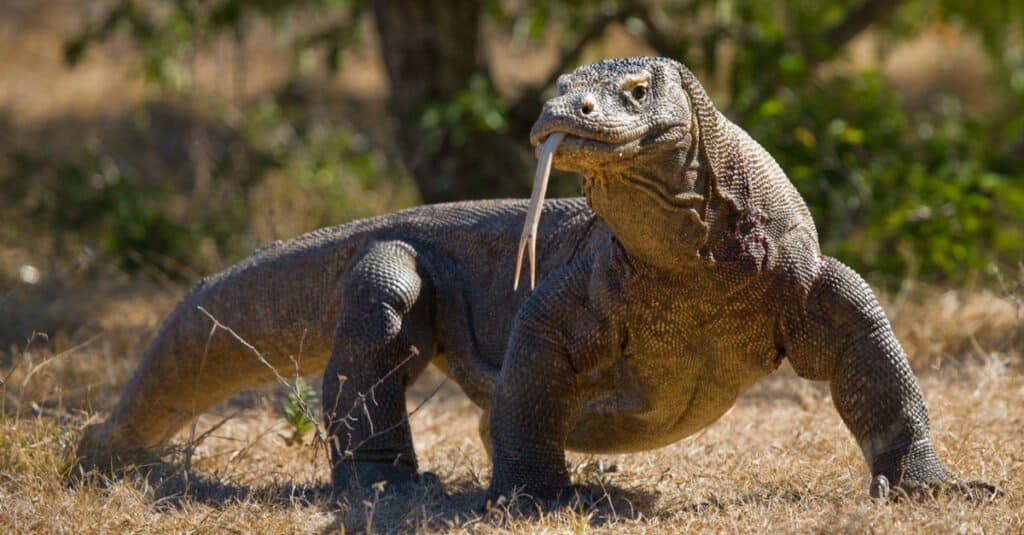There are some aspects of nature you expect. You’ve seen some common wild animals, you know to respect their space and power, and you generally go about your day without encountering too many. There are some wild animals that are a bit more surprising, much like the Komodo dragon.
This is a vulnerable population in terms of conservation status, but they are certainly not vulnerable around their prey. These monstrous creatures are equipped with serrated teeth, allowing them to tear through flesh with ease. They can even smell rotting flesh up to 2.5 miles away!
Click The Link Below To Watch The Full Video Footage
What Is A Komodo Dragon?
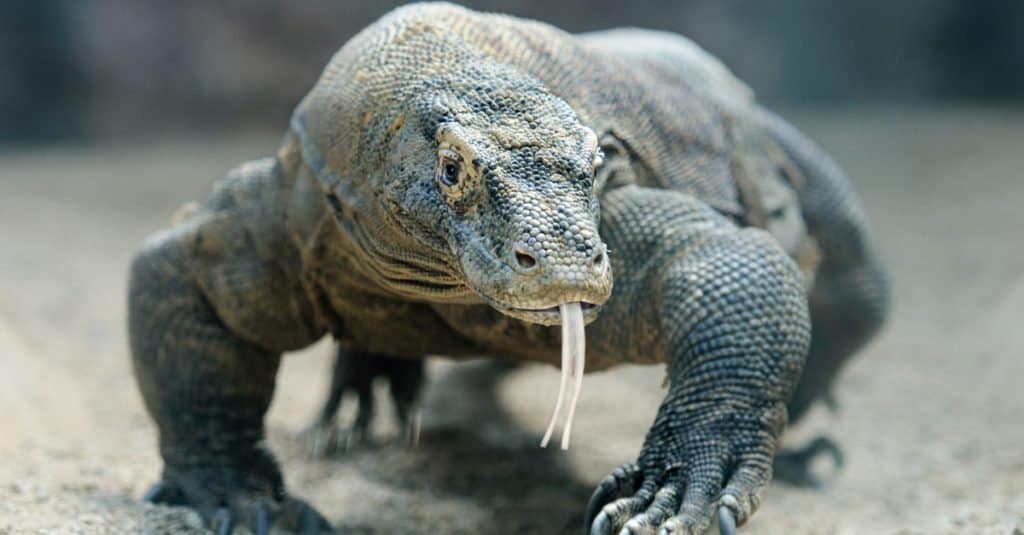
Komodo dragons have keen senses of smell and sight and are capable of bursts of speed of up to 12 mph
©iStock.com/photomaru
Komodo dragons are also known as Komodo monitors and are the heaviest lizards found in the world. These terrifying creatures can travel up to 12 miles per hour. They grow as long as ten feet and may weigh over 300 pounds. Not only are they intimidatingly large and like something from a prehistoric nightmare, but they also have a poisonous bite to boot!
Their vision allows them to spot prey as far as 985 feet and their undulating walk makes their head swing back and forth. That means they’re always on the lookout. They have no mercy and can rapidly down their meal with their strong throat and neck muscles.
What Do Komodo Dragons Eat?
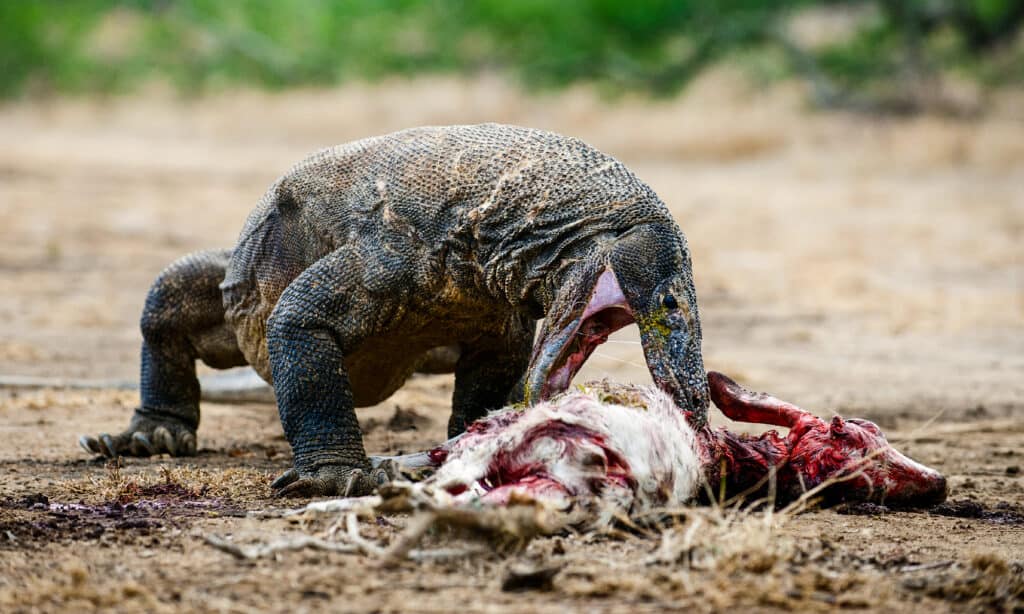
Komodo dragons are carnivorous by nature and are also ambush predators
©Sergey Uryadnikov/Shutterstock.com
If it’s meaty, they’ll eat it. They scavenge and stalk different animals that range in size. For example, they may go for something as small as a rodent and also try and tackle a large water buffalo. Deer are perhaps their favorite meal. If they make it past five years old, they’re definitely going after large prey.
Where Might You Encounter a Komodo Dragon?
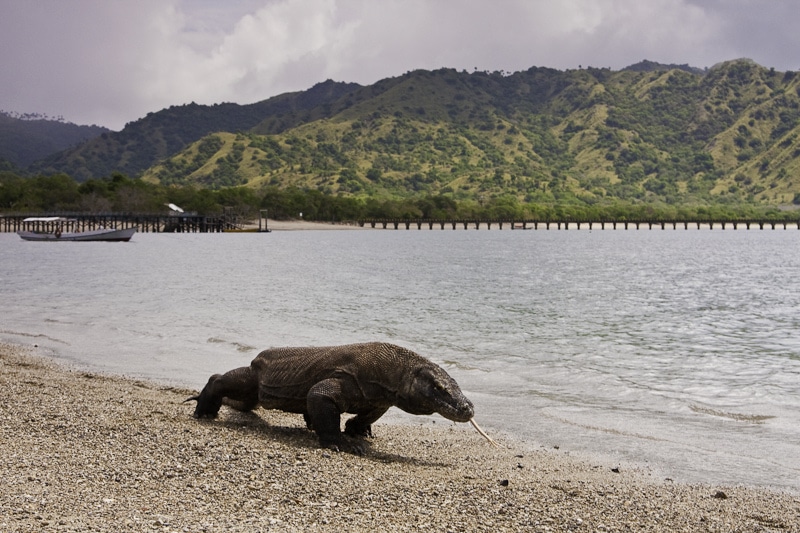
Komodo National Park is where you can find these large dragons.
©Adhi Rachdian from Indonesia, CC BY 2.0 – License
Once widespread across numerous Indonesian islands, the Komodo dragon now inhabits only five locations, all nestled within the confines of Komodo National Park. Komodo, Rintja, Gillimontang, Padar, and the western tip of Flores represent the last bastions for these colossal creatures. Their habitats encompass open woodlands, dry savannahs, and scrubby hillsides, occasionally including dried-up riverbeds. The impressive size of Komodo dragons is believed to have evolved in response to the presence of extinct large mammalian species and the absence of other formidable predators in their ecosystem.
In this clip linked below, you get a look at just how sinister nature can be. As it starts, you can appreciate its size. It walks on four legs, its back built like a bodybuilder, and its head narrow. There is a shark lying on the ground, out of the water, and not moving. It’s the perfect opportunity for this Komodo dragon to get a free meal.
It takes the shark’s head into its mouth and as if it were just a single noodle, starts swallowing it whole. It chomps down a few times, sucking it into the back of its throat, displaying its prowess. With the shark’s tail hanging out of its mouth, it looks over as if it has spotted the camera. That’s when the video ends.
Is It Normal Behavior for a Komodo Dragon to Attack a Shark?
Komodo Dragons are carnivores and highly efficient predators with the ability to hunt and consume a wide variety of foods. Scientific studies of this species have revealed quite a bit about what the Komodo dragon eats and is still uncovering added information, some of which may surprise you!
The Komodo dragon is a consummate carnivore: its diet consists primarily of meat and includes animals such as deer, goats, pigs, dogs, horses, and water buffalo. This species prefers to hunt live prey and will also eat rodents, wild boar, monkeys, rabbits, insects, smaller lizards, birds, and snakes. In fact, they are such voracious eaters that they will also consume any dead animals they come across as well.
In other words, as an opportunistic hunter, the Komodo dragon will hunt and kill anything that crosses its path. This includes both living and dead members of its own species and humans. So it stands to reason that, living on an island, the Komodo Dragon would also eat marine animals such as a shark.
How Large Are Adult Komodo Dragons?
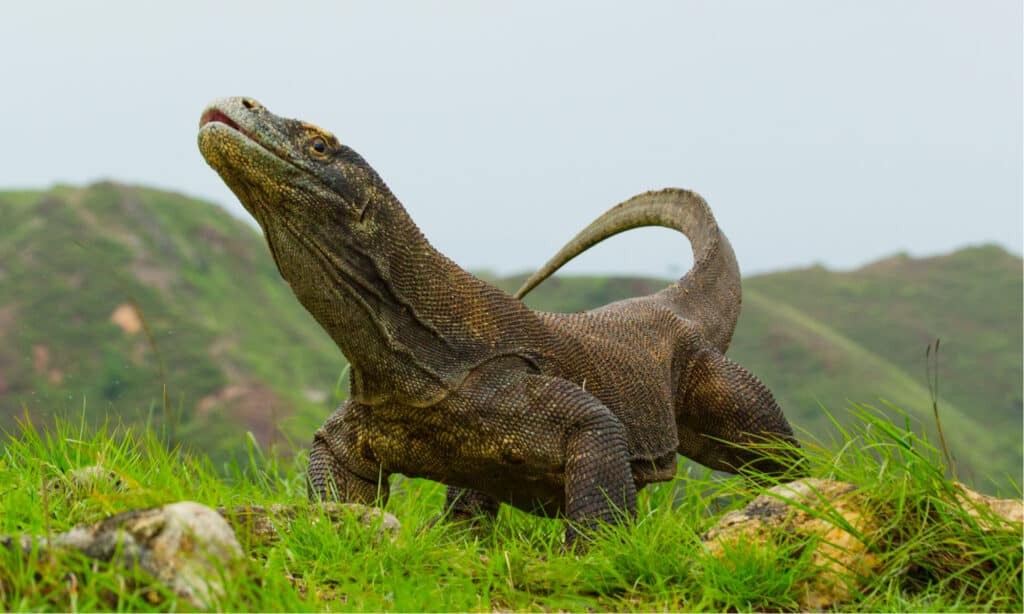
The largest Komodo dragon ever recorded was 10.3 feet and weighed 366 pounds.
©GUDKOV ANDREY/Shutterstock.com
The Komodo dragon is the largest and heaviest living lizard on the planet, with an average weight of around 154 pounds, although they can reach weights of over 300 pounds. Like many animals, the males tend to weigh more than the females and fully grown adults can reach 10 feet in length. The largest Komodo dragon ever recorded was 10.3 feet and weighed 366 pounds.
How Deadly is a Komodo Dragon’s Venom?
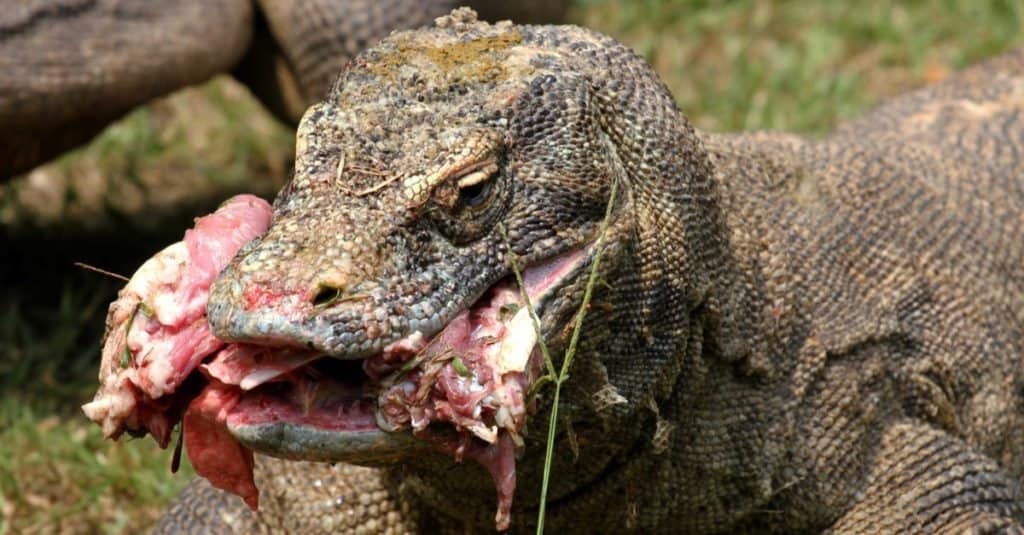
The sharp, serrated teeth of a Komodo dragon can tear and rip flesh, allowing for its toxic venom to enter the bloodstream and result in death if left untreated.
©Yudi S/Shutterstock.com
A Komodo dragon’s bite can be lethal, but not for the reasons you might imagine. Many predators in the wild like the lion or tiger, have superior bite forces, allowing them to kill their prey in such a manner. While the Komodo dragon has 60 sharp, serrated teeth that are no doubt painful if they chomped down on an animal or human, the bite force of this animal is fairly weak–500 to 600 PSI or 39 Newtons. Compare that to a saltwater crocodile, whose bite force is 252 Newtons.
The danger behind the Komodo dragon’s bite lies in the venom it generates. As their serrated teeth effectively slice open and rip flesh, their venom seeps into the wounds. The venom can put the victim into a state of shock, cause massive bleeding while preventing clotting, and decrease blood pressure–essentially incapacitating the victim. This venom quickens the blood loss process and sends the victim to lethargy or shock. If a human is attacked by a Komodo dragon, the venom can kill him or her in a matter of hours.
The photo featured at the top of this post is © iStock.com/kiwisoul
Thank you for reading! Have some feedback for us? Contact the AZ Animals editorial team.



